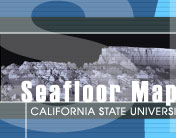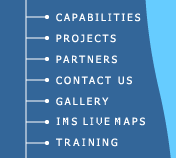



CAPABILITIES
|
The R/V VenTresca is equipped with both Reson 7111 and Reson 7125 SeaBat multibeam sonar systems for deep and shallow water surveys, respectively).* The 100 kHz SeaBat 7111 multibeam produces bathymetry data suitable for the generation of high resolution hydrographic charts. This system forms 101, 201 high-denisty, equi-angle or 301 equi-distant beams to cover a total receive sector of 150°. The Seabat 7125 is a single and/or dual frequency (200/400 kHz) multibeam echosounder system. In the 200kHz configuration, the receiver forms 256 equi-angle or equi-distant dynamically focused 1° receive beams to cover a 128° swath, with a maximum range of 500 meters. In the 400 kHz configuration, the receiver forms 256 or 512 equi-angle or equi-distant focused (0.5°) receive beams (128° swath) with ultra high resolution and a typical range of 200 meters. Both systems are controlled by a 7P high performance sonar processor that manages data flow as well as signal processing. In addition to depth information, the SFML SeaBat systems provide sidescan sonar imagery for creation of mosaics and seafloor substrate classification. Real-time globally corrected satellite positioining (±10 cm accuracy) is provided by C-NAV NavCom 2050 receiver interfaced to an Applanix POS/MV heading and motion sensor with "True Heave" delayed heave measurement sensor which records heave, pitch, heading, and roll data. Position and heave information are post-processed using Applanix PosPac software to produce Inertially Aided Post-Processed Kinematic (IAPPK) data for correction of vertical motion and production of sounding data on an ellipsoidal or orthometric vertical datum. Hypack Inc. (Hypack) software is used for survey design and execution. All raw data are logged using a Triton Imaging, Inc Isis Sonar data acquisition system, with real-time bathymetry DTM generation. Water column sound velocity profiles are collected using an AML SV+ sound velocity profiler. Bathymetric data are post-processed using CARIS HIPS hydrographic data cleaning system software. SFML retired its Reson 8101 system in 2008. *System specs taken from the Reson web site
|
 Multibeam
Bathymetry
Multibeam
Bathymetry